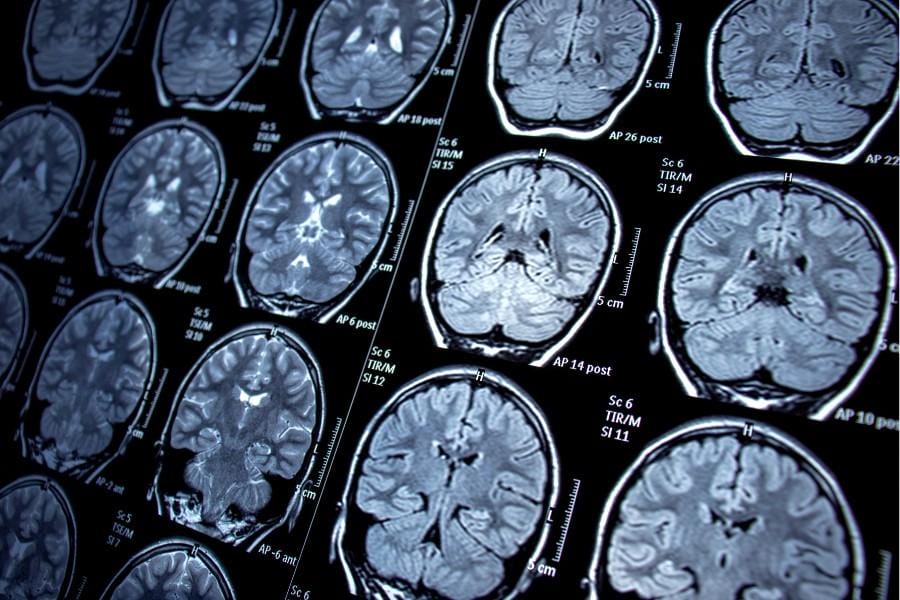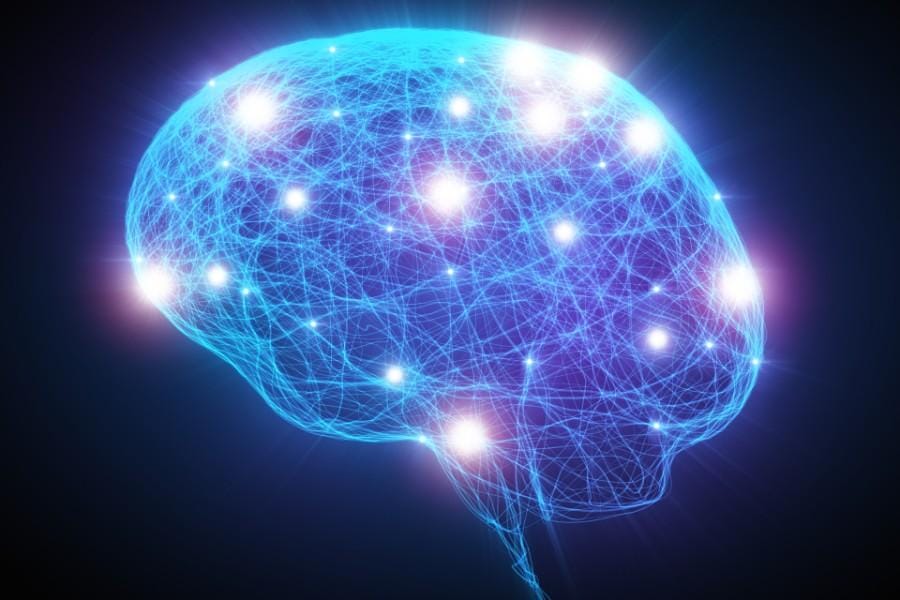Many people with Parkinson’s disease wonder if their condition can lead to seizures. Recent research shows that there may indeed be a connection between these two neurological conditions.
People with Parkinson’s disease have a higher risk of experiencing seizures compared to those without the condition.
Living with Parkinson’s is already challenging enough, but many people don’t realize there’s a puzzling connection with seizures that doctors are still working to fully understand.
Research shows that after receiving a Parkinson’s diagnosis, you might face a higher chance of experiencing epileptic seizures.
This link could stem from several possibilities—shared mechanisms in the brain, side effects from medications, or simply how both conditions affect brain function.
For both you and your healthcare team, recognizing this relationship matters. Sometimes, what looks like a Parkinson’s symptom might actually be seizure activity, which can make getting the right diagnosis tricky.
By staying aware of this potential connection, your doctors can keep a closer eye on your symptoms and craft treatment plans that truly address everything you’re experiencing in your journey with Parkinson’s.
Key Takeaways
- Parkinson’s disease is associated with an increased risk of developing epileptic seizures.
- The connection between these conditions may involve shared brain mechanisms or medication effects.
- Early recognition of seizure risk in Parkinson’s patients helps improve monitoring and treatment outcomes.
What is Parkinson’s Disease?
IN THIS ARTICLE

Parkinson’s disease affects the nervous system and causes problems with movement. The condition develops when certain brain cells stop working properly and die over time.
Defining Parkinson’s Disease
Parkinson’s disease is a progressive neurological disorder that primarily affects movement. It occurs when nerve cells in a specific area of the brain called the substantia nigra begin to break down and die.
These neurons produce dopamine, a chemical messenger essential for coordinating movement.
When dopamine levels decrease, abnormal brain activity occurs, leading to the characteristic symptoms of Parkinson’s.
The condition typically develops gradually, with symptoms often starting on one side of the body before affecting both sides.
Parkinson’s disease is the second most common neurodegenerative disorder after Alzheimer’s disease. It affects approximately 1% of people over age 60, though younger people can develop the condition as well.
Neurological Symptoms and Motor Function
The primary symptoms of Parkinson’s disease involve motor function problems.
Tremors, often beginning in the hands or fingers even when at rest, are usually the first noticeable sign. These tremors may resemble a pill-rolling motion between the thumb and forefinger.
Other key motor symptoms include:
- Bradykinesia: Slowed movement that makes simple tasks difficult
- Muscle rigidity: Stiffness in limbs that limits range of motion
- Impaired posture and balance: Leading to stooped posture and increased fall risk
- Loss of automatic movements: Reduced ability to perform unconscious movements like blinking or swinging arms while walking
Many patients also experience changes in speech, with voice becoming softer or more monotone. Overall, cognitive decline is very common.
Writing may become smaller and more difficult to perform.
Disease Progression and Impact on Neurons
Parkinson’s disease progresses through several stages, typically developing slowly over years. The condition begins when neurons in the brain start to malfunction and die. These neurons normally produce dopamine, which helps coordinate movement.
Scientists believe both genetic and environmental factors play a role in causing neuron death. As more neurons die, dopamine levels continue to drop, making movement symptoms worse over time.
The progression pattern varies among individuals. Some people remain in early stages for many years, while others advance more quickly. As the disease moves forward, neurons in other parts of the brain and nervous system are affected.
Later stages often bring non-motor symptoms including cognitive changes, sleep problems, and autonomic dysfunction, such as being able to drive yourself with PD. Research suggests people with Parkinson’s have an increased risk of seizures compared to those without the condition.
Seizures and Their Relationship to Parkinson’s Disease

Recent research reveals important connections between seizures and Parkinson’s disease (PD).
The relationship appears bidirectional, with each condition potentially influencing the other through complex neurological mechanisms.
What Are Seizures?
Seizures are sudden, uncontrolled electrical disturbances in the brain that can cause changes in behavior, movements, feelings, and levels of consciousness.
They result from abnormal electrical activity in brain cells. Unlike the tremors seen in Parkinson’s disease, seizures are typically episodic events rather than ongoing symptoms.
Seizures may present as:
- Generalized seizures affecting the entire brain
- Focal seizures affecting just one area of the brain
- Absence seizures featuring brief periods of staring
- Tonic-clonic seizures involving loss of consciousness and muscle rigidity
When a person experiences recurring seizures, they may be diagnosed with epilepsy, a chronic neurological disorder. The symptoms can sometimes be confused with certain manifestations of Parkinson’s disease, particularly when involuntary movements are involved.
Prevalence of Seizures in Parkinson’s Disease
People with Parkinson’s disease have a higher risk of developing seizures compared to the general population.
Studies suggest that incident PD is associated with an increased risk of incident epileptic seizures, though the exact percentage varies across research.
This elevated risk may stem from shared neurological pathways or from medication side effects. Some anti-Parkinson’s medications can lower the seizure threshold in susceptible individuals.
Additionally, research suggests that epilepsy could be a risk factor for developing Parkinson’s disease or might contribute to its progression. The connection appears complex and potentially bidirectional.
Distinguishing Seizures from Parkinson’s Symptoms
Differentiating between seizures and Parkinson’s symptoms can be challenging due to overlapping presentations. Both conditions can involve unusual movements, but there are key differences:
Parkinson’s symptoms:
- Resting tremor (typically 4-6 Hz)
- Slow, rhythmic shaking often beginning in hands
- Usually present during rest, improves with intentional movement
- Persistent symptoms that worsen gradually
Seizure symptoms:
- Sudden onset and offset
- May include loss of awareness
- Can involve jerking, stiffening, or convulsions
- Usually episodic rather than continuous
Proper diagnosis requires careful clinical evaluation, often including EEG testing to detect the abnormal brain activity characteristic of seizures.
While epilepsy has traditionally been considered not directly associated with PD, emerging evidence suggests stronger connections than previously thought.
Causes and Risk Factors for Seizures in Parkinson’s Disease

People with Parkinson’s disease have a higher risk of developing seizures compared to the general population. The relationship between these conditions involves complex changes in brain function and structure.
Neurological Changes and Nerve Cells
The primary issue in Parkinson’s disease is the death of dopamine-producing neurons in a brain region called the substantia nigra. This loss disrupts normal brain signaling patterns, potentially creating conditions that lead to seizures.
When dopamine levels fall, it affects how nerve cells communicate. Dopamine acts as a chemical messenger that helps regulate movement and emotional responses. Its depletion can cause electrical imbalances in the brain.
Research suggests that these electrical imbalances may lower the seizure threshold in some patients. The abnormal electrical activity can spread to different brain regions, triggering seizure events.
Brain inflammation and oxidative stress in Parkinson’s patients may also damage the protective mechanisms that normally prevent excessive neuronal firing, making seizures more likely.
Genetic and Environmental Contributors
Several genetic factors may increase the risk of both Parkinson’s disease and seizures. Certain gene mutations affecting protein processing and mitochondrial function have been linked to both conditions.
The LRRK2 gene mutation, commonly associated with Parkinson’s disease, may also influence seizure susceptibility by affecting how neurons process electrical signals.
Environmental toxins that contribute to Parkinson’s risk, such as certain pesticides and industrial chemicals, may independently damage neural circuits in ways that increase seizure risk.
Studies indicate that having epilepsy may be a risk factor for developing Parkinson’s disease later in life, suggesting shared biological mechanisms.
Medications used to treat Parkinson’s disease can sometimes lower the seizure threshold, particularly at higher doses or in patients with existing brain abnormalities.
Symptoms and Diagnostic Challenges
Distinguishing between Parkinson’s disease symptoms and seizures presents significant challenges for healthcare providers. Both conditions can manifest with overlapping physical and cognitive symptoms that require careful assessment.
Differentiating Between Parkinsonian Symptoms and Seizures
Parkinson’s disease typically causes tremors, while seizures involve sudden electrical disturbances in the brain. The key difference lies in their presentation: Parkinson’s tremors usually occur during rest and often affect the hands with a pill-rolling motion. They stop during voluntary movement.
Seizures, in contrast, involve sudden, often violent muscle contractions that may affect the entire body or specific regions. Unlike the predictable nature of Parkinson’s symptoms, seizures are episodic and generally last a few minutes.
Diagnostic challenges arise when symptoms overlap. For example, freezing episodes in Parkinson’s might resemble partial seizures. Both conditions can also cause brief losses of awareness that may be misinterpreted.
Cognitive and Motor Impairments
Both Parkinson’s and seizure disorders can significantly impact cognitive and motor functions. Parkinson’s patients typically experience bradykinesia (slowness of movement), rigidity, and stiffness that progressively worsen over time.
Balance problems become increasingly common as Parkinson’s advances, leading to difficulty walking and a higher risk of falls. These motor symptoms develop gradually, unlike the sudden motor disruptions seen during seizures.
Cognitive changes in Parkinson’s often include:
- Slowed thinking and processing
- Memory difficulties
- Executive function impairment
- Potential development of dementia in advanced stages
Research suggests that people with Parkinson’s have a higher risk of seizures than the general population, creating situations where one condition may mask or complicate the other.
Associated Non-Motor Symptoms
Beyond movement difficulties, both conditions share several non-motor symptoms that further complicate diagnosis. Parkinson’s patients frequently experience depression, anxiety, and sleep disturbances that affect quality of life.
Autonomic dysfunctions like blood pressure fluctuations, bladder issues, and sweating changes are common in Parkinson’s. Similarly, people with epilepsy may experience mood changes, fatigue, and cognitive effects following seizures.
Some studies indicate a potential bidirectional relationship, with epilepsy possibly serving as a risk factor for developing Parkinson’s disease.
This connection might involve shared neural pathways or common underlying mechanisms.
Coordination problems manifest differently in each condition—gradual deterioration in Parkinson’s versus sudden, temporary impairment during and after seizures. Healthcare providers must carefully document symptom patterns to distinguish between these conditions.
Treatment Options and Management Strategies

Managing both Parkinson’s disease and seizures requires a comprehensive approach that addresses both conditions simultaneously.
Treatment plans often need careful coordination between neurologists specializing in movement disorders and epilepsy.
Medications and Their Effects
Several medications can help manage Parkinson’s symptoms while considering seizure risk. Levodopa remains the gold standard treatment for Parkinson’s disease, helping to replace depleted dopamine. However, medication adjustments may be necessary for patients experiencing seizures.
Dopamine agonists like pramipexole can sometimes be better tolerated than levodopa in patients with dual diagnoses. Anti-seizure medications must be carefully selected, as some can worsen Parkinson’s symptoms.
Common medication considerations include:
- Avoiding medications that lower seizure threshold
- Monitoring for drug interactions between anti-seizure and Parkinson’s medications
- Adjusting dosages to minimize side effects
Medication timing is crucial, as irregular medication levels can trigger both Parkinson’s symptoms and potentially seizure activity in susceptible individuals.
Surgical Approaches and Deep Brain Stimulation
For patients with both conditions who don’t respond adequately to medications, surgical options may be considered. Deep brain stimulation (DBS) has proven effective for managing Parkinson’s symptoms including tremor, rigidity, and stiffness.
DBS involves implanting electrodes into specific brain regions and connecting them to a stimulator device. The relationship between DBS and seizures requires careful evaluation:
- Some studies suggest DBS may actually help control certain types of seizures
- Patient selection is critical, with thorough pre-surgical epilepsy screening
- Programming parameters must be optimized for each patient’s unique situation
Neurosurgeons and neurologists work together to determine if a patient with both conditions is a good candidate for surgical intervention.
Regular follow-up appointments are essential to adjust stimulation settings for optimal benefit.
Physical Therapy and Support Resources
Beyond medications and surgery, comprehensive management includes physical interventions and support systems.
Physical therapy plays a vital role in maintaining mobility and independence for those with Parkinson’s disease, regardless of seizure status.
Specialized exercise programs help with:
- Balance and coordination training
- Strength maintenance
- Flexibility improvement
- Fall prevention strategies
Support groups provide valuable emotional assistance and practical information. Many communities offer dedicated groups for people with neurological conditions.
Occupational therapy can help patients develop strategies for daily activities affected by both conditions. Adaptive equipment and home modifications may increase safety, especially important for those with seizure risks.
Regular communication with healthcare providers ensures the treatment plan evolves with changing symptoms and needs.
Get Parkinson’s Care at Home
If you have a loved one with Parkinson’s Disease, having a professional in-home nurse can benefit both you and them.
Their private nurse will provide all of the home care and medical assistance they need and offer you the ultimate peace of mind.
Click below to discover how NurseRegistry can help today.






